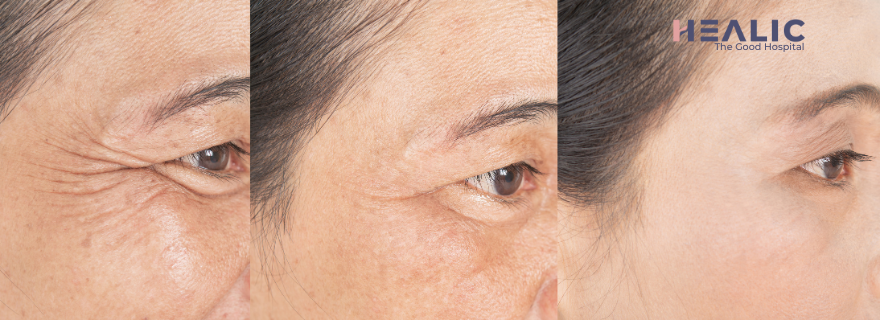Understanding Chemical Peels: Exploring the Types, Benefits, and Risks
In the quest for flawless and rejuvenated skin, chemical peels have emerged as a popular and effective cosmetic treatment. They are renowned for their ability to address skin pigmentation issues, including hyperpigmentation. This blog post will delve into the various types of chemical peels, their impact on pigmentation, the treatment of hyperpigmentation, and the associated risks and benefits. Let’s unravel the world of chemical peels and discover their wonders for skin pigmentation.
Types of Chemical Peels and Their Effects on Pigmentation
1. Superficial Peels:
- Effects on Pigmentation: Superficial peels such as glycolic acid are effective in treating mild pigmentation issues like sunspots and uneven skin tone. They work by exfoliating the top layer of the skin.
2. Medium Peels:
- Effects on Pigmentation: Medium peels like TCA peels penetrate deeper into the skin and are beneficial for treating moderate pigmentation problems, such as melasma.
3. Deep Peels:
- Effects on Pigmentation: Deep peels like phenol peels are capable of addressing severe pigmentation concerns but come with higher risks. They target deep skin layers to provide significant improvement.
How Chemical Peels Work to Address Skin Pigmentation Issues
Chemical peels work by applying a chemical solution to the skin, which causes exfoliation and peeling. This process removes the damaged outer layers of the skin, revealing a smoother, more even-toned complexion. The chemicals in the peel help to break down melanin clusters and promote skin cell turnover, leading to reduced pigmentation over time.
Potential Risks and Side Effects Associated with Chemical Peels
While chemical peels are generally safe when performed by a trained professional, there are some risks and side effects to be aware of:
- Redness and Irritation: Temporary skin redness and irritation are common post-peel side effects.
- Hyperpigmentation or Hypopigmentation: In some cases, the skin may darken (hyperpigmentation) or lighten (hypopigmentation) after a peel.
- Scarring: Deep peels carry a higher risk of scarring, especially in individuals with sensitive skin.
- Sun Sensitivity: Skin becomes more sensitive to the sun after a chemical peel, increasing the risk of sunburn and skin damage.
Treating Hyperpigmentation with Chemical Peels
Role of Chemical Peels in Treating Various Forms of Hyperpigmentation
Chemical peels are effective in treating different types of hyperpigmentation, including:
- Sunspots: Superficial peels can help fade sunspots caused by exposure to UV radiation.
- Melasma: Medium to deep peels are beneficial in minimizing melasma patches by targeting deeper layers of pigmentation.
Comparative Analysis of Chemical Peels for Hyperpigmentation
When choosing a chemical peel for hyperpigmentation treatment, factors to consider include the type and severity of pigmentation, skin type, and downtime required. Consulting with a dermatologist is essential to determine the most suitable peel for individual needs.
Precautions and Aftercare Tips for Hyperpigmentation Treatment with Chemical Peels
Pre-care Tips for Chemical Peels:
-
Consultation: Prior to undergoing a chemical peel, schedule a consultation with a dermatologist or skincare professional to assess your skin type, concerns, and the most suitable type of peel.
-
Skincare Preparation: Follow a skincare regimen recommended by your provider to prepare your skin for the peel. This may include using gentle cleansers, moisturizers, and sunscreen.
-
Sun Protection: Protect your skin from the sun by using a broad-spectrum sunscreen with an SPF of 30 or higher regularly. Avoid direct sun exposure to prevent skin damage.
-
Avoid Certain Products: Discontinue the use of retinoids, exfoliating scrubs, and other irritating skincare products in the days leading up to the peel to prevent skin sensitivity.
-
Hydration: Ensure your skin is well-hydrated by drinking an adequate amount of water and using hydrating skincare products to maintain skin health.
To ensure optimal results and minimize risks, follow these precautions and aftercare tips:
- Sun Protection: Use broad-spectrum sunscreen to protect treated skin from sun damage.
- Moisturize: Keep the skin well-hydrated to aid in the healing process.
- Avoid Harsh Products: Refrain from using harsh skincare products immediately after a peel.
- Follow Dermatologist’s Recommendations: Adhere to post-peel instructions provided by your dermatologist for the best outcome.
In conclusion, chemical peels offer a versatile solution for addressing pigmentation issues, but it’s crucial to understand the types, benefits, risks, and precautions associated with them. Consultation with a skincare professional is recommended to determine the most suitable peel for individual skin concerns.






